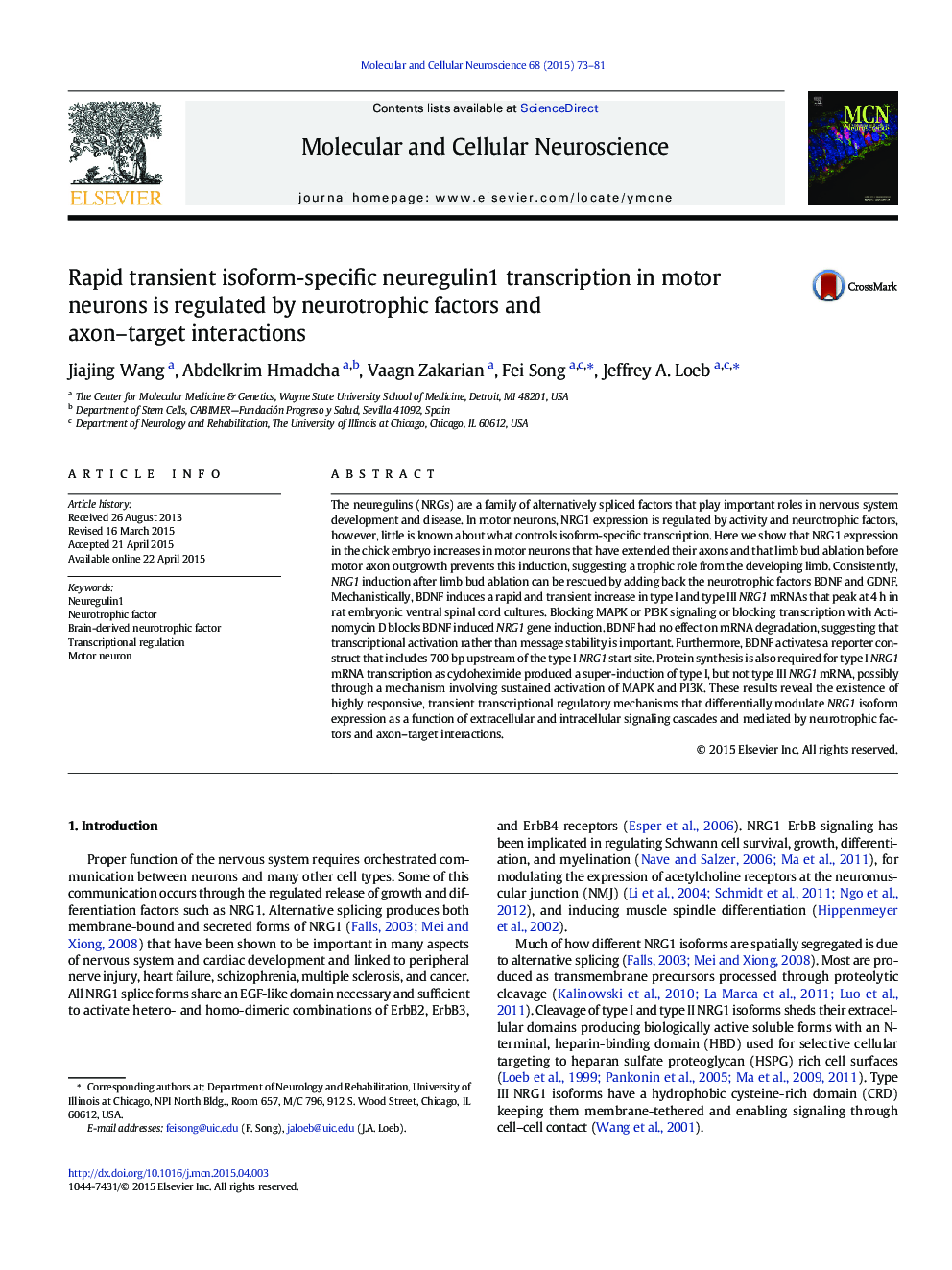| Article ID | Journal | Published Year | Pages | File Type |
|---|---|---|---|---|
| 8478524 | Molecular and Cellular Neuroscience | 2015 | 9 Pages |
Abstract
The neuregulins (NRGs) are a family of alternatively spliced factors that play important roles in nervous system development and disease. In motor neurons, NRG1 expression is regulated by activity and neurotrophic factors, however, little is known about what controls isoform-specific transcription. Here we show that NRG1 expression in the chick embryo increases in motor neurons that have extended their axons and that limb bud ablation before motor axon outgrowth prevents this induction, suggesting a trophic role from the developing limb. Consistently, NRG1 induction after limb bud ablation can be rescued by adding back the neurotrophic factors BDNF and GDNF. Mechanistically, BDNF induces a rapid and transient increase in type I and type III NRG1 mRNAs that peak at 4Â h in rat embryonic ventral spinal cord cultures. Blocking MAPK or PI3K signaling or blocking transcription with Actinomycin D blocks BDNF induced NRG1 gene induction. BDNF had no effect on mRNA degradation, suggesting that transcriptional activation rather than message stability is important. Furthermore, BDNF activates a reporter construct that includes 700Â bp upstream of the type I NRG1 start site. Protein synthesis is also required for type I NRG1 mRNA transcription as cycloheximide produced a super-induction of type I, but not type III NRG1 mRNA, possibly through a mechanism involving sustained activation of MAPK and PI3K. These results reveal the existence of highly responsive, transient transcriptional regulatory mechanisms that differentially modulate NRG1 isoform expression as a function of extracellular and intracellular signaling cascades and mediated by neurotrophic factors and axon-target interactions.
Keywords
Related Topics
Life Sciences
Biochemistry, Genetics and Molecular Biology
Cell Biology
Authors
Jiajing Wang, Abdelkrim Hmadcha, Vaagn Zakarian, Fei Song, Jeffrey A. Loeb,
